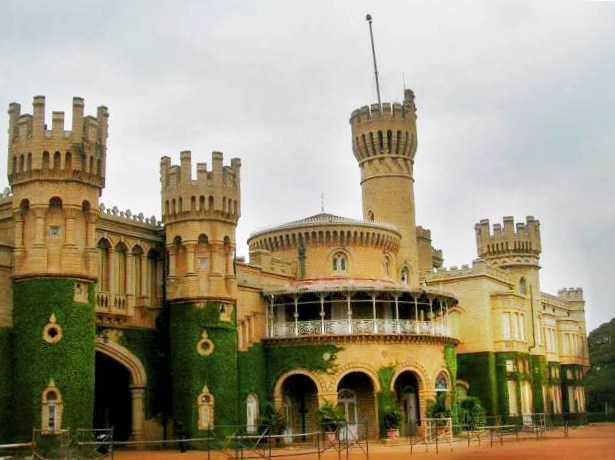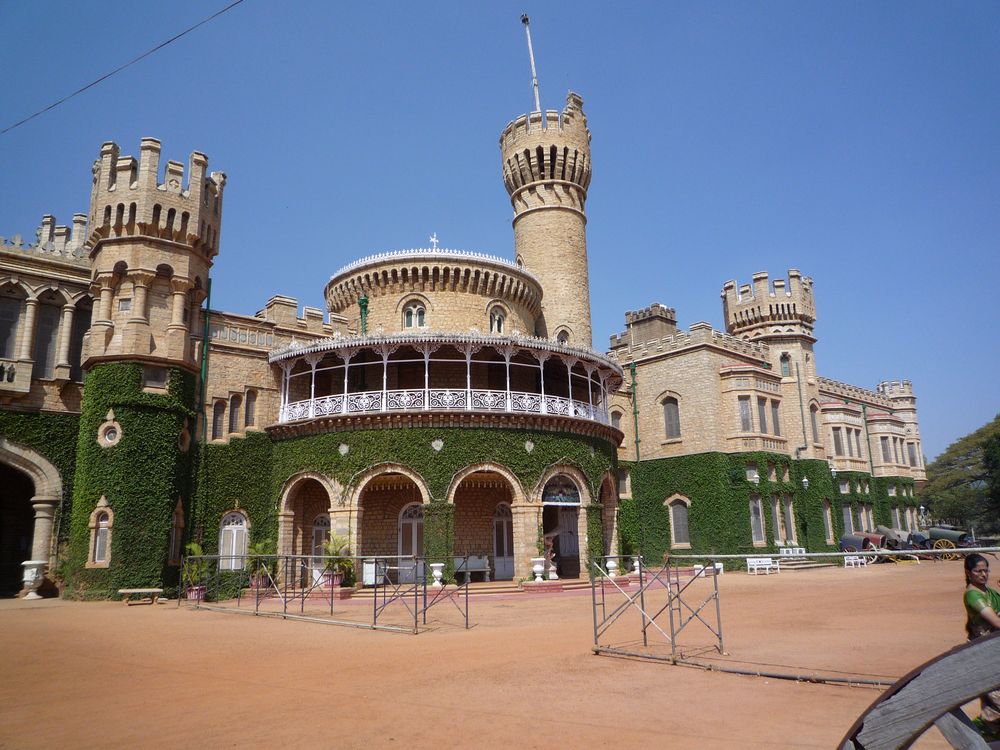Bangalore
05:10
Bangalore is officially known as Bengaluru is the capital of the Indian state of Karnataka. It is located in southern India on the Deccan Plateau, at the height of over 900 metres above the sea level.
Bangalore is known for its pleasant climate throughout the year. Its elevation is the highest among the major large cities of India.
Bangalore is unique in many ways. It has the most pleasant weather throughout the year which got itself the name “Pensioner’s Paradise”.
As the hub of India’s booming IT industry, it vies with Mumbai as the nation’s most progressive city, and its creature comforts can be godsend to the weary traveller who had done the yards. Bangalore is known as the “Silicon Valley of India” because of its role as the nation’s leading information technology (IT) exporter. Bangalore is the second fastest growing major metropolis in India.
Bangalore is known as the “Garden City of India” because of its gentle climate, broad streets, greenery and the presence of many public parks, such as the Lal Bagh and the Cubbon Park. Bangalore is sometimes called as the “Pub Capital of the India” and the “Rock/Metal Capital of India” because of its underground music scene and it is one of the premier places to hold international rock concerts.
Climate and Weather:
Day time temperatures remain fairly constant between the 26-29 degrees Celsius (79-84 degree Fahrenheit), for most of the year. The temperature usually only exceeds 30 degrees Celsius (86 degrees Fahrenheit) during the hotter months from the March to May, when it can reach around 34 degrees Celsius (93 degrees Fahrenheit). Winters in the Bangalore are warm and sunny, although the temperature does drop at night to around 15 degrees Celsius (59 degrees Fahrenheit). Winter morning can also be foggy. September and October are particularly rainy months.
Places to Visit:
1. Lal Bagh:
Lal Bagh or the Bagh Botanical Gardens, meaning The Red Garden in English, is a well known Botanical Garden in Southern Bangalore, India. The garden was originally commissioned by the Hyder Ali, the ruler finished by his son Tipu Sultan. It was the famous glass house which hosts an annual flower show. Lal Bagh houses India’s largest collection of Tropical plants has an aquarium and the lake and is one of the main tourist attractions in Bangalore.
Lal Bagh is the 240 acres garden and is located in south Bangalore. It derives its name “Lal Bagh” from the collection of red roses that bloom throughout the year there. The glasshouse, which was constructed in the year 1889 to commemorate the visit of the Prince of Wales, is the jewel of this garden.
Lalbagh takes on the festive look during the India’s Independence Day and Republic day, with the captivating show of over 200 Varieties of flowers. The show also features an exhibition of hybrid Vegetables.
2. Cubbon Park:
Cubbon Park is the landmark ‘lung’ area of the Bangalore city, located within the heart of city in the Central Administrative Area. Cubbon Park is the great place to laze around in the lush green paradise. It has the treasure of different species of the exotic plants. The park was named after the erstwhile Commissioner of Bangalore, Sir Mark Cubbon. Many ornamental and flowering trees, both exotic and indigenous can be found in the park.
It’s a popular place for walkers, Joggers and nature lovers. Bal Bhavan in the park is the great place for the kids to enjoy. An aquarium is also located in the Cubbon Park, with many varieties of exotic and ornamental fish.
3. Bangalore Palace
Bangalore Palace, a palace located in Bengaluru, Karnataka, India, Rev. J. Garrett, who was the 1st principal of the central High School in Bangalore, now known as Central College.
The construction of the palace was started in the 1862 and completed in 1944. In 1884, it was bought by then Maharaja ofMysore Chamarajendra Wadiyar X. Now owned by the Mysore royal family, the palace has recently undergone a renovation.
The beautiful palace has Tudor style architecture, with the fortified towers, arches, green lawns and elegant woodcarving in its interiors.
4. Tipu Sultan’s Summer Palace
Tipu Sultan’s Summer Palace in Bangalore, India, is an example of Indo-Islamic and was the summer residence of the Mysorean ruler Tipu Sultan. Hyder Ali commenced its construction within the walls of the Bangalore Fort, and it was completed during the reign of the Tipu Sultan in 1791.
Today the government of Karnataka maintains the palace, which is located at the centre of Old Bangalore near the Kalasipalyam bus stand as a tourist spot.
The structure was built entirely of teak and stands adorned with pillars, arches and balconies. The Hindu temple seen in the courtyard of the fort is the proof of the Tipu Sultan’s religious tolerance.
5. Vidhana Soudha:
The Vidhana Soudha located in Bengaluru (Bangalore) is the seat of the state legislature of Karnataka. It is an imposing building, constructed in the style sometimes described as the Mysore Neo- Dravidian, and incorporates elements of the Indo-Saracenic and Dravidian styles. The construction was completed in 1956.
This building is the massive example of neo Dravidian architecture, with four domes on its corner. It houses the legislative Chamber of Karnataka Government as well as accommodates many government departments. It’s stunningly illuminated at night.
Bangalore is known for its pleasant climate throughout the year. Its elevation is the highest among the major large cities of India.
Bangalore is unique in many ways. It has the most pleasant weather throughout the year which got itself the name “Pensioner’s Paradise”.
As the hub of India’s booming IT industry, it vies with Mumbai as the nation’s most progressive city, and its creature comforts can be godsend to the weary traveller who had done the yards. Bangalore is known as the “Silicon Valley of India” because of its role as the nation’s leading information technology (IT) exporter. Bangalore is the second fastest growing major metropolis in India.
Bangalore is known as the “Garden City of India” because of its gentle climate, broad streets, greenery and the presence of many public parks, such as the Lal Bagh and the Cubbon Park. Bangalore is sometimes called as the “Pub Capital of the India” and the “Rock/Metal Capital of India” because of its underground music scene and it is one of the premier places to hold international rock concerts.
Climate and Weather:
Day time temperatures remain fairly constant between the 26-29 degrees Celsius (79-84 degree Fahrenheit), for most of the year. The temperature usually only exceeds 30 degrees Celsius (86 degrees Fahrenheit) during the hotter months from the March to May, when it can reach around 34 degrees Celsius (93 degrees Fahrenheit). Winters in the Bangalore are warm and sunny, although the temperature does drop at night to around 15 degrees Celsius (59 degrees Fahrenheit). Winter morning can also be foggy. September and October are particularly rainy months.
Places to Visit:
1. Lal Bagh:
Lal Bagh or the Bagh Botanical Gardens, meaning The Red Garden in English, is a well known Botanical Garden in Southern Bangalore, India. The garden was originally commissioned by the Hyder Ali, the ruler finished by his son Tipu Sultan. It was the famous glass house which hosts an annual flower show. Lal Bagh houses India’s largest collection of Tropical plants has an aquarium and the lake and is one of the main tourist attractions in Bangalore.
Lal Bagh is the 240 acres garden and is located in south Bangalore. It derives its name “Lal Bagh” from the collection of red roses that bloom throughout the year there. The glasshouse, which was constructed in the year 1889 to commemorate the visit of the Prince of Wales, is the jewel of this garden.
Lalbagh takes on the festive look during the India’s Independence Day and Republic day, with the captivating show of over 200 Varieties of flowers. The show also features an exhibition of hybrid Vegetables.
2. Cubbon Park:
Cubbon Park is the landmark ‘lung’ area of the Bangalore city, located within the heart of city in the Central Administrative Area. Cubbon Park is the great place to laze around in the lush green paradise. It has the treasure of different species of the exotic plants. The park was named after the erstwhile Commissioner of Bangalore, Sir Mark Cubbon. Many ornamental and flowering trees, both exotic and indigenous can be found in the park.
It’s a popular place for walkers, Joggers and nature lovers. Bal Bhavan in the park is the great place for the kids to enjoy. An aquarium is also located in the Cubbon Park, with many varieties of exotic and ornamental fish.
3. Bangalore Palace
Bangalore Palace, a palace located in Bengaluru, Karnataka, India, Rev. J. Garrett, who was the 1st principal of the central High School in Bangalore, now known as Central College.
The construction of the palace was started in the 1862 and completed in 1944. In 1884, it was bought by then Maharaja ofMysore Chamarajendra Wadiyar X. Now owned by the Mysore royal family, the palace has recently undergone a renovation.
The beautiful palace has Tudor style architecture, with the fortified towers, arches, green lawns and elegant woodcarving in its interiors.
4. Tipu Sultan’s Summer Palace
Tipu Sultan’s Summer Palace in Bangalore, India, is an example of Indo-Islamic and was the summer residence of the Mysorean ruler Tipu Sultan. Hyder Ali commenced its construction within the walls of the Bangalore Fort, and it was completed during the reign of the Tipu Sultan in 1791.
Today the government of Karnataka maintains the palace, which is located at the centre of Old Bangalore near the Kalasipalyam bus stand as a tourist spot.
The structure was built entirely of teak and stands adorned with pillars, arches and balconies. The Hindu temple seen in the courtyard of the fort is the proof of the Tipu Sultan’s religious tolerance.
5. Vidhana Soudha:
The Vidhana Soudha located in Bengaluru (Bangalore) is the seat of the state legislature of Karnataka. It is an imposing building, constructed in the style sometimes described as the Mysore Neo- Dravidian, and incorporates elements of the Indo-Saracenic and Dravidian styles. The construction was completed in 1956.
This building is the massive example of neo Dravidian architecture, with four domes on its corner. It houses the legislative Chamber of Karnataka Government as well as accommodates many government departments. It’s stunningly illuminated at night.


0 comments